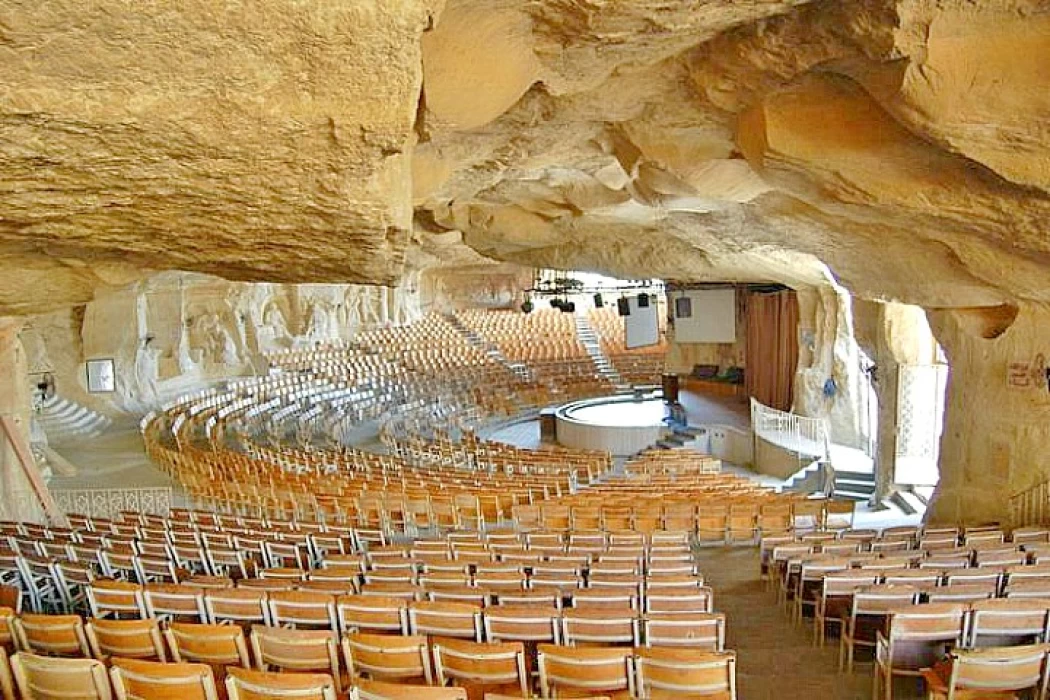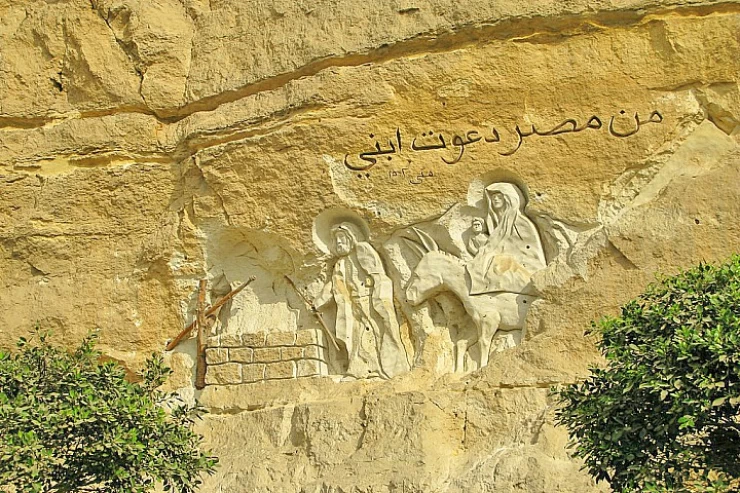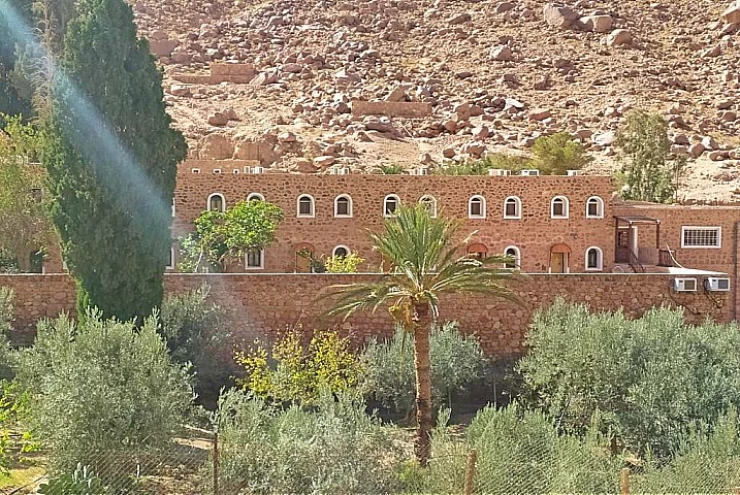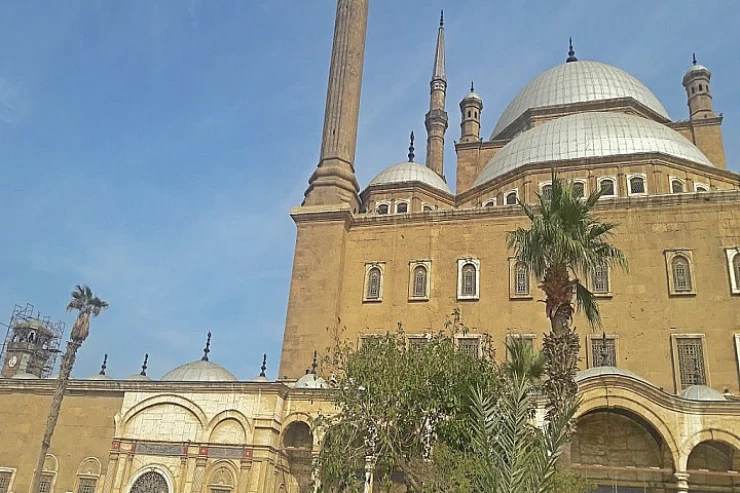
Monastery of Saint Simon The Tanner
The Monastery of Saint Simon the Tanner: A Historical and Spiritual Sanctuary
Introduction
Nestled in the rocky hills of Cairo, Egypt, the Monastery of Saint Simon the Tanner is a remarkable spiritual and historical site that stands as a testament to Christian monastic life and tradition. This ancient monastery is not only renowned for its religious significance but also for its unique architectural features and historical background.
Historical Background
The Monastery of Saint Simon the Tanner, also known as the Monastery of Saint Simon the Tanner and the Cave Church of Saint Simon, is located in the Mokattam Mountain area. It is often associated with the Coptic Orthodox Church, one of the oldest Christian communities in Egypt. The monastery is named after Saint Simon the Tanner, a revered figure in Coptic Christianity known for his piety and humble profession as a tanner.
Saint Simon the Tanner, also known as Saint Simon the Shoemaker, lived during the 10th century and is celebrated for his ascetic life and deep devotion. According to tradition, Simon led a life of prayer and service, contributing to the growth and spiritual depth of the early Christian community in Egypt.
Architectural Significance
The Monastery of Saint Simon the Tanner is renowned for its distinctive and awe-inspiring architecture. The site consists of a complex of churches and monastic buildings carved directly into the rock of the Mokattam Mountain. This unique construction method reflects the early Christian tradition of rock-cut churches, which were designed to provide a place of worship and reflection in a remote and austere setting.
The monastery's architecture is characterized by its simplicity and functional design. The churches are adorned with intricate frescoes and icons depicting scenes from the Bible and the lives of saints. The use of natural rock formations in the construction adds to the serene and contemplative atmosphere of the monastery.
Spiritual and Cultural Importance
The Monastery of Saint Simon the Tanner serves as a spiritual center for the Coptic Orthodox community and attracts visitors from around the world. It is a place of pilgrimage for many, who come to seek solace, reflect on their faith, and experience the rich traditions of Coptic Christianity.
In addition to its religious significance, the monastery plays a vital role in preserving the cultural heritage of Egypt. It stands as a symbol of the enduring legacy of Coptic monasticism and the historical contributions of early Christian monks to the development of Christian theology and practice.
The monastery's location also has a historical dimension. The Mokattam Mountain area is associated with several important events in Christian history, including the legend of Saint Simon the Tanner's role in moving the mountain through prayer, which is a significant story in Coptic tradition.
A Hidden Gem in Cairo's Mokattam Hills .One of the most remarkable and beautiful historical places of worship is the Monastery of Saint Simon the Tanner, also known as the Cave Church, situated in the hilly, rocky Mokattam Hills of Cairo. Unlike the busy and crowded capital city of Egypt, this beautiful monastery does not only serve as a tranquil sacred space open to those who come in to seek the presence of God but rather possesses an exceptional view of walls sculpted into rocks forming the structure of the church. The very history of the place is almost more than ancient Coptic Christianity and the miraculous. For this reason, no matter how much in a hurry one is, a visit to this place is worth it for every religious lover wanting to explore Egypt’s religious mosaic.
The monastery is named after Saint Simon the Tanner, a Coptic saint from the 10th century who is most celebrated for a miracle during the rule of the Fatimid Caliph Al-Muizz. As per the Coptic tradition, it is said that during one of the reigns of the Copts, Al Muiz introduced a challenge to Pope Abram, the most senior leader of the Coptic Orthodoxy, to shift the Mokkatam mountain to illustrate that Christianity is true. After three days spent in prayers and fasting, Pope Abram had a vision of the virgin Mary, who asked him to look for Simon the Tanner. Simon, a simple leather craftsman who was very well connected with God, when the church gathered to pray, the mountain in question was raised, thus demonstrating the Christian religion to Al Muiz.
As a remembrance of this miracle, many centuries later, the large monastery compound in Mokattam was built in recognition of Saint Simon and the important event. At present, the monastery is also a monument to the Christian history of Egypt and the Christian context of the country.
The Monastery of Saint Simon the Tanner, which is located in the city of Cairo, is paradoxically quite remote. This monastery is located within Mokattam’s garbage city, wherein the Zabbaleen, are informal garbage cleaners of the city. The monastery, however, remains an island of peace amidst the turmoil. While the path to the monastery weaves through several narrow, twisting cores and squat buildings teeming with the city’s recycling activity, the view of the Cave Church’s gigantic rock-hewn altar is simply astounding.
The Monastery of Saint Simon the Tanner encloses an ensemble of several churches, each of exceptional interest: The most well-known and the one that leaves the greatest impression is The Cave Church, or, as it is more often referred to, The Church of Saint Simon the Tanner. This colossal area is hewn from the mountainside, making it the biggest church in the entire Middle East that can hold about 20,000 people. The inside of the cave is filled with religious images, paintings, and sculptures from the Holy Bible and the life of Saint Simon, which is all aglow with bright light coming from the rock ceilings. Above the cave, there are numerous cracks through which come rays of sunlight.
Within the compound, there are other notable churches such as:
The Church of Saint Mark: A compact but equally attractive church boasting soft stone carvings and quiet, contemplative areas for prayer and meditation.
The Church of Saint Bola: This church is also hewn from the rock and is cherished by tourists for its calm and peaceful interiors.
The Church of the Virgin Mary and St. Simon the Tanner: A congregation of faithful at a smaller church, where the churchgoers convene for daily masses and spiritual services.
Every church embodies a different spirit and embraces the beauty of nature along with the depth of spiritual culture.
The architecture of the Monastery of Saint Simon the Tanner is one of its most breathtaking features. The churches and spaces are not built conventionally but are hewed out of the rock of the Mokattam Hills. The use of natural, unprocessed limestone as the wall surfaces creates a rugged environment for the interior, allowing the guests to truly appreciate the ancient history of this place. This style of building also plays a part in enhancing the quality acoustic properties of the monastery, enabling the beautiful resonation of the Coptic liturgical hymns and chants all around the huge cave.
The outside view of the church complex is also exceptional. The corrugated grounds at the periphery of the monastery are embellished with high-relief sculptures and carvings that illustrate Biblical and Coptic cultural incidents. These high-stand carvings were done by a Polish sculptor, invariably hierarchy, thereby elevating the station of the site.
The Zabbaleen Connection
Over the last century, the Zabbaleen, a well-organized group of waste collectors or garbage collectors inhabiting the Mokattam region of Cairo, have had a very positive interaction with the Monastery of Saint Simon the Tanner. Most of the Zabbaleen are Copts, and like most communities in Egypt, they have suffered from troubles both social and economic. Nevertheless, a considerable part of this population has thrived in Garbage City through better integration of waste management and environmental services.
Though the purpose of the monastery transcends the physical boundary of the monastery, containing the Zabbaleen as it is, the monastery also offers hope and faith to these people. Some of the Zabbaleen assist in maintaining the monastery, and the place is important in their routine activity as a prayer and a meeting place. In addition to the monastery of Saint Simon the Tanner, a visit to the Zabbaleen's settlement reveals the extent to which their relentless work in recycling waste in Cairo went.
Religious significance and pilgrimage
The Monastery of Saint Simon the Tanner is a well-known place of pilgrimage for Coptic Christians not only in Egypt but also throughout the world. Many pilgrims primarily come to pray and meditate on the life and miracles of St. Simon. They seek inner healing and divine connection. The church also conducts regular services such as mass and other religious activities besides of the memorial services for Saint Simon, who is remembered annually on the 26th day of November.

















